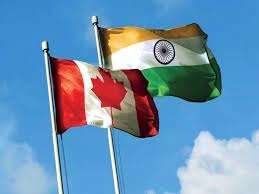Why gold will still be valuable even after reaching all-time highs
From the beginning of time, ladies have loved to own and wear gold because it is the most reliable and sparkling metal. Even while prices are hitting new highs every other day—they reached a record $2,434 per ounce in late April and closed at $2,419.80 on Saturday, up more than $34 in a single day—the yellow metal’s allure remains strong. This indicates that the metal has increased by more over 40% from the October 2022 low, which was brought on by Russia’s invasion of Ukraine in February of the same year.

Since gold is the most liquid safe haven asset and serves as a hedge against inflation and other financial uncertainties, it has actually been the most popular option for accumulating wealth in our nation for a long time—long before stocks, mutual funds, and other financial instruments gained popularity as investment options. At a time when prices have been rising, the nation has also moved away from physically possessing gold in the form of jewelry, coins, or bars throughout time and toward dematerialized forms such sovereign gold bonds, digital gold, and gold exchange traded funds.
Why is there a need for this?
It should be mentioned that the price of gold has increased significantly. Just in the last two months, the price of gold has increased from R60,373/10 grams, or R6037/g, on April 19, 2023 to R75,550/10 grams, or R7,555/g, on May 19, 2024. And in just the last nine years, the profits on this most popular household asset have increased thrice. Is there a chance for this to happen again this year or next? The industry says that the metal may quadruple again and surpass the R2-lakh threshold in the next years, so this is not unthinkable.
The price of gold almost tripled to R 24,740/10 grams in 2015, according to statistics from the India Bullion & Jewellers Association. It took little over nine years for gold to reach its present level. Previous to this, the price, which was R8,250 in 2006, had quadrupled in more over nine years. However, it took almost 19 years until gold tripled from R2,570/10 g in 1987 until 2006. The tripling period was around eight years and six years prior to this cycle.
Additionally, the glitter may reach levels beyond R2 lakh/10 gram or R20,000/g with a tripling from the existing level! Historical evidence indicates that big world events, such economic downturns and geopolitical conflicts, may have a big impact on gold prices. There is no denying this possibility, either, given the repeated cycle of global financial crises over the past two decades—five and a half years separating two meltdowns—or the recurrent border tension between given the abundance of megalomaniac leaders in the world or the tendency of West Asians to erupt occasionally.
According to statistics from the India Bullion & Jewellers Association, the price of gold has increased by 80% in only the last four years due to a combination of factors including the Covid epidemic, geopolitical uncertainty, and the declining rupee.
Jateen Trivedi of LKP Securities predicts that during the next seven to twelve years, the metal would reach the R20,000/g or R2 lakh/10 grams threshold, citing previous decadal trends. Some experts base their expectations for a price gain on the possibility of increased geopolitical tensions between China and Taiwan as well as between Iran and Israel. When there is uncertainty or a significant war occurring anywhere in the globe, gold prices have been seen to increase more.
The world’s top central banks, however, are the greatest gold bulls there are. Even if gold reserves are no longer the gold standard for central banks, at least 30% of the price increase this year is due to their buying up the metal, according to many worldwide brokerage forecasts that predict the commodity selling at $2700/ounce by December 2024.
Additionally, as of February 2024, the United States held the largest gold reserves, holding 8,133.46 tonnes, or 71.3% of the Federal Reserve’s currency chest. Germany, Italy, China, and India followed with 3,352.65 t/70.6, 2,451.84 t/676.6, and 822.1/8.9 tonnes, of which 19 tonnes were added in just the first quarter of 2024.
According to the World Gold Council, domestic gold demand increased by 8% to 136.6 tons in the first quarter of 2024, despite prices setting record highs almost every week. This was driven by the RBI, which purchased 19 tonnes in Q1 alone compared to 16 tonnes in total until 2023, and was bolstered by a strong economic environment, as reported by the WGC.
Because of its immediate availability, gold serves as a hedge and safety net against inflation, which contributes to increased trust in the economy of a country or in a person’s ability to handle personal difficulties. Since gold is no longer used to support national currencies, it is nevertheless considered one of the finest stores of wealth.
The nation saw a 20% increase in the value of gold demand during the March quarter, amounting to R 75,470 crore on an annualized basis. A year ago, the entire domestic demand for gold, including investment and jewelry, was 126.3 tonne; in Q1, it increased to 136.6 tonne. According to WGC, the demand for gold jewelry was 95 tons, up 4%, mostly from rural regions.







